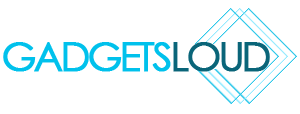Temperature Measuring and Monitoring Devices are used in a broad range of applications that contribute to the proper functioning of machinery, the storage of food and safe operation of equipment. This kind of measurement is monitored through a temperature logger, which records and stores data and sends alerts to warn of fluctuations outside of set parameters.

A variety of instruments are utilised to measure temperatures, which all contribute to the temperature logger data set.
Thermometers
A liquid thermometer consists of a glass bulb filled with alcohol; formerly mercury was used. The volume of the liquid increases as it heats up, and it then travels up a tube with Celsius or Fahrenheit markings. More widely used is the infrared thermometer or laser thermometer. This operates by inferring temperature from the amount of thermal radiation that is emitted by the object in question. The amount of infrared energy emitted by the object is compared with its emissivity, allowing temperature to be measured from a distance.
Thermocouple or Probe
A probe or thermocouple is constructed by bonding two metals that expand at different temperatures together in the shape of a thin metal probe. One end of the probe is inserted into the object to be measured (such as meat) and the other is connected to a known temperature point.
As the metals heat, an electromotive force (EMR) is created at the two end points. The thermocouple circuit output is calibrated directly against the unknown temperature, providing its value.
Process Controller or Thermostat.
A temperature controller, or thermostat, controls temperature by comparing a desired temperature with the actual temperature. It then sends a signal to a heating or cooling device which uses the information to either heat or withdraw heat to bring the temperature to the desired value. Thermostats can be applied to air conditioners or HVAC systems, central heating, ovens, water heaters, refrigerators or incubators. Thermostats use sensors to conduct their measurement. Electronic thermostats often use a thermistor which is a resistor that relies on temperature for its resistance.
How to choose the right temperature logger
Before investing in a temperature logger for your business, consider the features of each.
Does it have enough memory capacity for the amount of data you will be recording? How many sensors will it be collecting data from and how frequently?
How much deployment flexibility is needed – what kind of environments will it be situated in?
Remotely situated temperature loggers need the durability of a ruggedized outer case, or it may need to be water-proof. This will also impact the mounting options available such as magnets or straps. Check that the visual display and data acquisition system is suitable for your criteria.
As there are many variables to be considered when purchasing a temperature or other data logger, make sure you do not overspend on unnecessary features by discussing your requirements with an expert before making a decision.
















